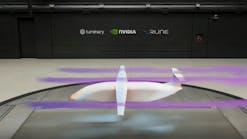Avionics Technology: Diagnostic Tools for the Next Generation
During my early and more formative years in aviation maintenance I had the opportunity to work with an old electrician (probably about 50 then). Vince had been a career enlisted man in the Air Force and had his hands all over many of the most sophisticated aircraft of the day.
At that time we both were working production flight test for the manufacturer of business jets. The job was hectic trying to get the bugs and gremlins exterminated prior to the aircraft being turned over to the new owner. When an electrical or avionics glitch was reported, some of the aircraft crew chiefs would request several of the younger (and perceived to be sharper) electricians.
Vince was known to take more time to get the aircraft back in the air. I did take notice of this tendency and even queried one of the more senior crew chiefs. He suggested I start to look at the trends of reoccurring problems.
On the whole, our department had a very good record of fixing broken aircraft but Vince was batting 1,000. He attempted to get as much information as he could about the nature of the discrepancy as well as understand as much as possible about the proper operation of the system. Once he could fully comprehend what should happen and what the flight crew observed he would layout a detailed plan of attack using schematics and wiring diagrams. Prior to heading to the aircraft, a trip to the equipment locker would yield necessary breakout boxes or specific system testers. He once told me the only tool really needed for electrical testing is a basic multimeter and an assortment of test leads.
Over the years it has been my privilege to work with many brilliant technicians and as a result many little known tricks of the trade have been properly archived. My realization, we can troubleshoot many electrical systems with nothing more than a magnetic stud finder and a lamp of appropriate voltage with test leads attached. Although not normally associated by many with the digital aircraft of today; these tools and techniques will most likely still be employed well after I retire and in the proper hands can reveal many anomalies.
Toolbox of the future
So what will the toolbox of a next generation aircraft technician consist of? It would be easy to spend thousands of dollars on various types of analyzers and bus readers but will the investment be justified and will the specialized equipment be regularly used? Hand tools such as wire strippers will still need to be suitable for the type of wire along with terminal end crimpers and wire tie pullers. Strange as it may sound, overtightening a wire tie can compress insulation and alter impedance of a digital bus or coax. Calibration again is an important factor.
Aircraft salespeople state that with the sophisticated nature of their product; the onboard computer diagnostics will virtually eliminate the need for troubleshooting. I guess that is why they are salespeople. The majority of built-in diagnostics will only detect signal out of tolerance (SOT) conditions and do not have the ability to reason. Aircraft manufactured in recent years probably have at least some digital technology onboard. This is greatly expanded in machines such as the single engine Cirrus up through the Airbus 380 and most fly-by-wire systems unlike cable operated flight controls have limited need of a cable tensiometer.
One of the leading causes of failure for electronic components is electro static discharge (ESD). With that in mind, ESD wrist straps along with a static friendly work surface are paramount for working on and around a digital aircraft.
Oscilloscopes might be considered the VOM of the future. While they do enable the user to accomplish the traditional meter functions, they will graphically display problems you can’t detect otherwise. With information sampling rates that can keep up with even the highest speed data transfer and the potential for memory storage to hold sample readings for further evaluation, a portable Scopemeter captures and displays waveforms, noise, and other disturbances in great detail. Newer versions will allow simultaneous monitoring of up to four data lines while smaller units almost rival the traditional volt/ohm meter (VOM) when it comes to the amount of real estate occupied in the drawer of the toolbox. Transitioning from a multimeter to an oscilloscope will require some patience and it may even be prudent to seek guidance from someone who has used them prior as proper setup is essential to obtaining usable information in the circuit testing process.
Calibration and cost
Like with any piece of equipment used to verify airworthiness, periodic calibration is needed. In some cases buying a new unit direct from the manufacturer does not ensure proper calibration. Often the certificate has to be requested at the time of sale and may be a negotiable part of the final price.
Cost of Scopemeters has been a factor prohibiting many technicians from having a personal device. In recent years the price has dropped with very basic units priced in the same general area as a good multimeter. It is not uncommon however to plan on a quote of anywhere from $1,100 to $4,000 depending on features and accessories.
Virtually all of the options compatible with a VOM will work with a Scopemeter. Some of the most common include an amp clamp for sensing current flow and a thermal sensor which can turn a testing device into a digital thermometer. A broad selection of test leads is a must for an aircraft technician along with a spare probe to be used with the scope features.
A signal tracer is another good value and consists of an audio signal generator and a portable signal sensing probe. The audio generator can be attached to the circuit in question and the probe can then sense where the signal can go. This is very effective when it comes to locating nonshielded wires or remotely located components. In many cases the sensitivity of the probe will enable the user to detect the presence of electrical noise at potential points of entry into sensitive circuits.
PCs and smartphones
In the computer age what could be a more appropriate tool than a portable computer?
Many aircraft, engine and avionics manufacturers have stopped producing paper documentation and depend on some form of electronic media. In addition, software is a frequent tool to allow a PC to interface with various airframe systems to facilitate data downloads and/or troubleshooting. Even Smartphones have found a place in the aircraft technician’s toolbox. Arguably the primary purpose is to stay connected by either voice or data transmission but newer applications can turn one of these devices into a WiFi signal analyzer, sound meter, flashlight, vibration analyzer, and even a pocket reference guide.
Troubleshooting digital systems does involve a certain finesse along with a strong constitution as reported problems are frequently related to software glitches and don’t have anything to do with system bussing. Although, when an actual bus problem does occur, it is important to consider all the possible factors. High resistance connections, improper insulation, or even capacitance value of the conductors will impact data flow.
Knowledge
Probably the most important tool to achieve success in the future is knowledge. Understanding principals of operation along with specific system capabilities will undoubtedly provide a solid foundation for building the most effective toolbox necessary for the challenges of the future. Proper education coupled with suitable training can create an awareness of just what can be accomplished with the equipment at hand.
It is always preferable to be well versed in using the tried and true tools rather than having all the latest and greatest whizbang devices but not a clue in their use.
Some still look as a data bus for what it really is: nothing more than pairs of wires twisted together. What could possibly be difficult in troubleshooting something as simple as that? Maybe my old buddy Vince had something when he said he could fix about anything with a VOM.
Jim Sparks has been in aviation for 30 years and is a licensed A&P. He is the manager of aviation maintenance for a private company with a fleet including light single engine aircraft, helicopters, and several types of business jets. He can be reached at [email protected].




